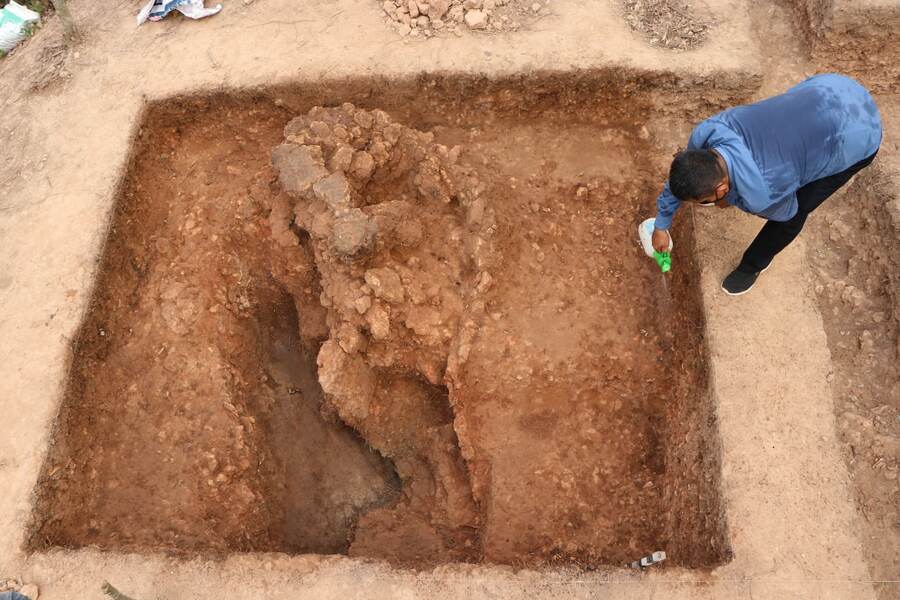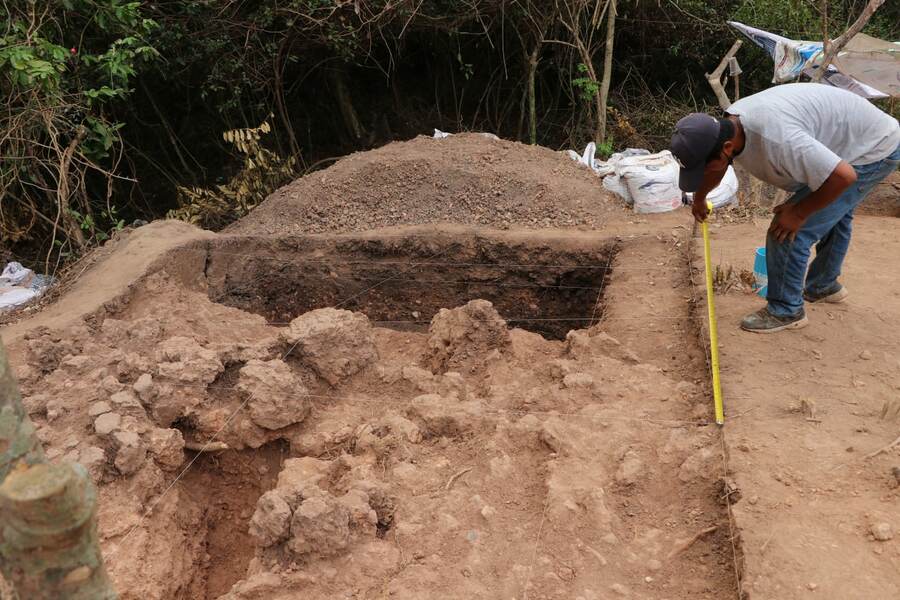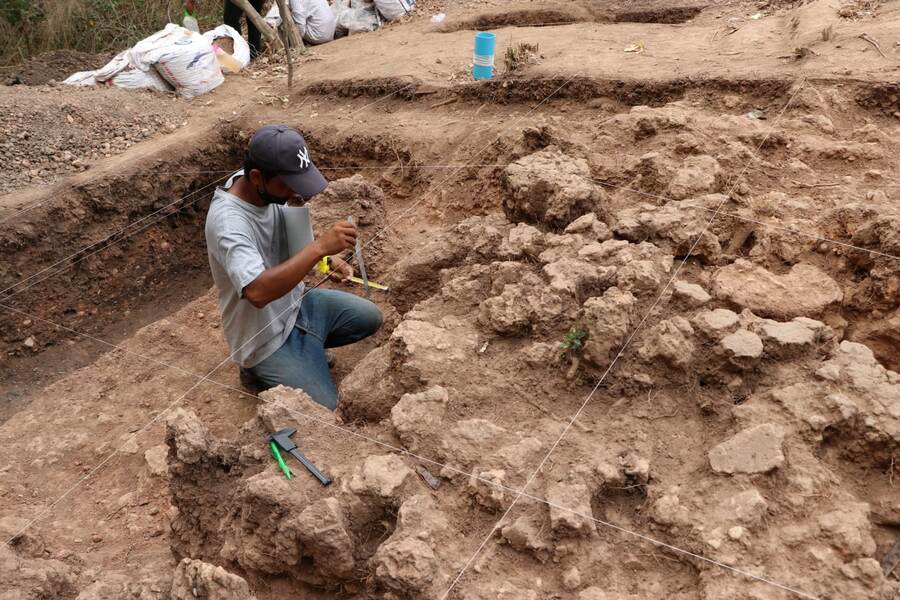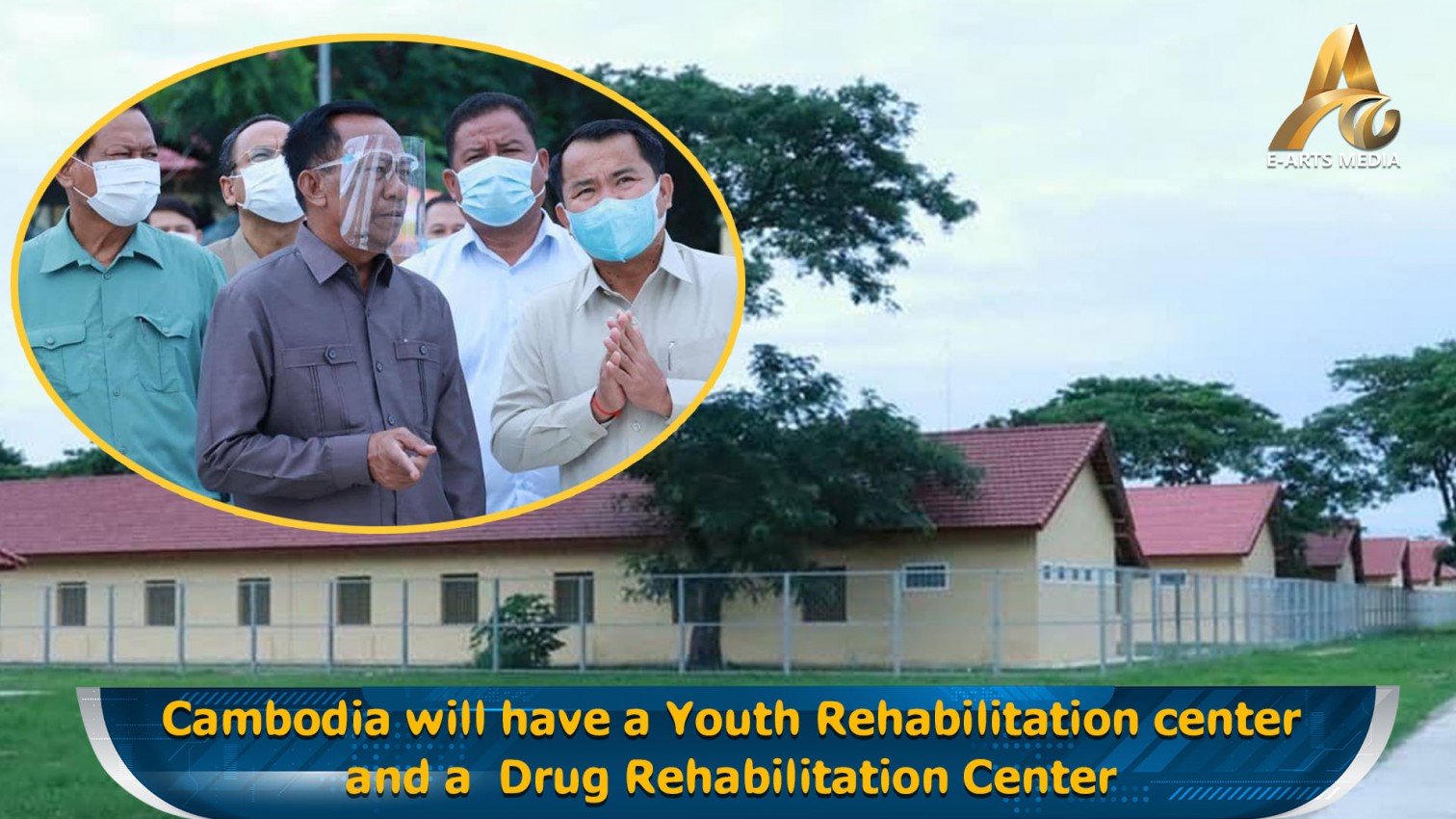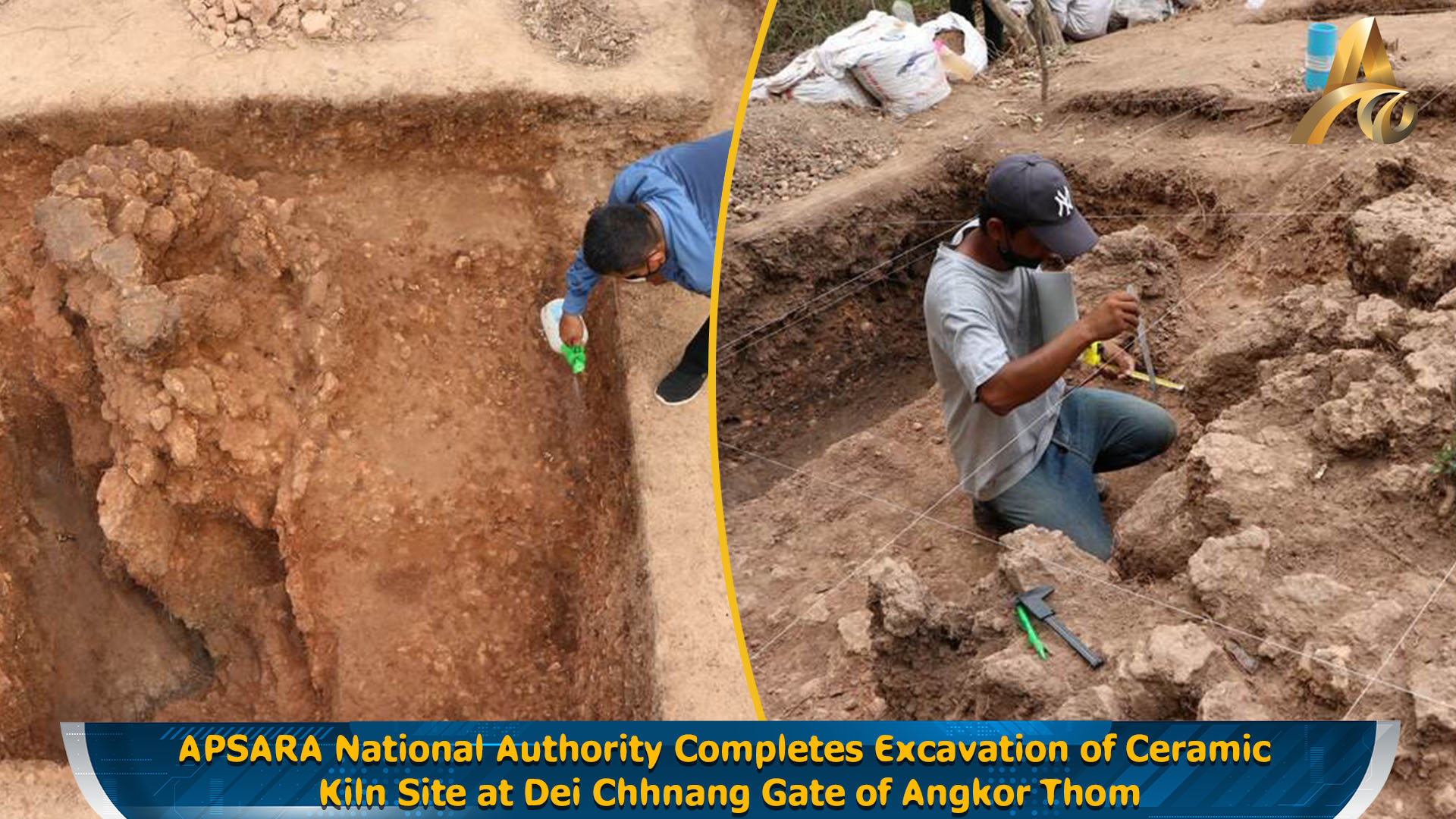
APSARA National Authority Completes Excavation of Ceramic Kiln Site at Dei Chhnang Gate of Angkor Thom
SIEM REAP: The archeological team of the Angkor International Centre of Research and Documentation of the APSARA National Authority continues to study and complete the excavation at the site of the ceramic kilns at Dei Chhnang Gate of Angkor Thom, according to a press release issued by the APSARA National Authority on Monday, 21 March.
The Deputy Director of the Angkor International Centre of Research and Documentation, Tin Tina, said that in late 2019, his team excavated on an ancient mound called Tuol Trapeang Bos to confirm if that mound was an ancient ceramic kiln. Through the excavation results, the team found the structure of the low-temperature kiln, which was used for ceramic production of items such as pots, water jars, and tiles.
The research results provide an important database that can help to confirm the presence of the ceramic kilns on the dam in the northwest corner of Dei Chhnang Gate of Angkor Thom, which is why the working team of the Angkor International Centre of research and documentation continues to collect data on pottery clusters and conduct post-analysis of GPS at the site of the ceramic kilns of Dei Chhnang Gate of Angkor Thom, to determine the scope of the site, the number of mounds and divide the groups of the mounds. As a result, Tin Tina has said that the they have determined there are a total of 24 ceramic kilns at Dei Chhnang Gate of Angkor Thom, divided into 11 groups.
Tin Tina said that since the beginning of February 2022, the team has selected TDCK7a in group 7 for excavation. The kiln excavation is to learn more about the structure of other kilns in this area, whether it is similar to the TDCK1 (Tuol Trapeang Bos) kiln, and to understand the kiln group connection at this site.
Excavation progress made by mid-March 2022 has found that the remains of the kiln structure the same as the TDCK1 kiln, but with the difference that on the TDCK1 mound, there was only one kiln, while at the TDCK7a, there are four kilns. According to further research results, Tin Tina reports that two or three of these kilns can burn at the same time.
The Head of the Ceramic Study Office of the Angkor International Centre of Research and Documentation, Chhay Rachana, said that of the four ceramic kilns at TDCK7a, not all are large, and some are only just 1.5 meters in diameter. He added that some are the same size as the kiln at TDCK1 (with a diameter of 2.2 meters, and a length of 3 meters). He continued that their research concludes that the found ancient kiln structure started to produce ceramics in the late 13th century and ended in the early 15th century.
